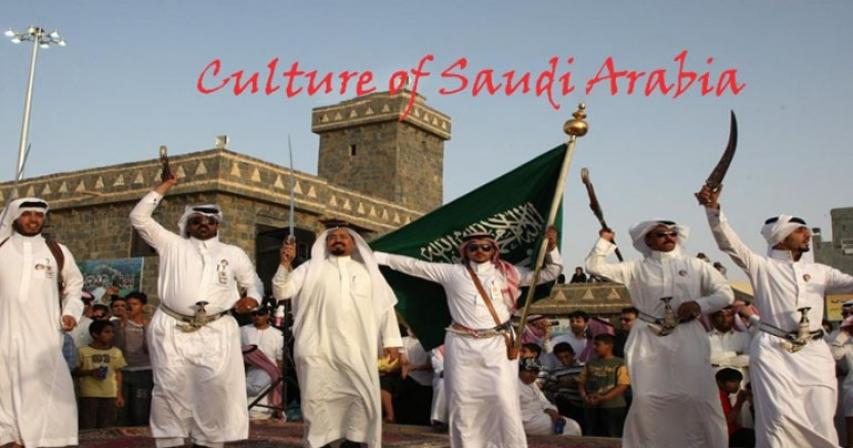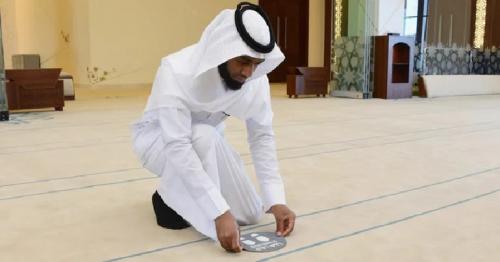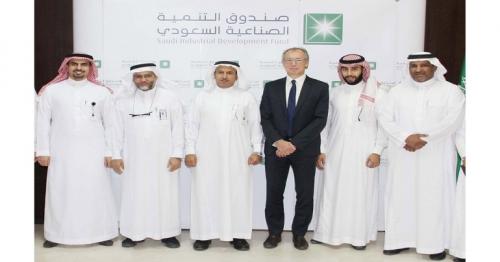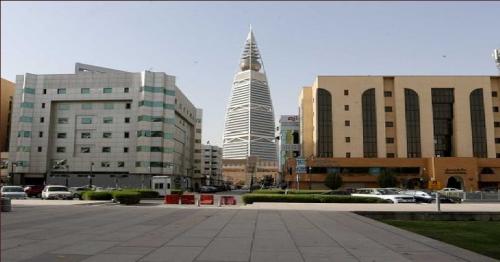Culture of Saudi Arabia

Culture Name
Saudi Arabian
Alternative Names
Arabia, Saudi, North Arabia, Desert Arabia; informally, the Kingdom
Orientation
Identification. The Kingdom of Saudi Arabia (in Arabic, al-Mamlaka al-Arabiya as-Saudiya ) occupies most of the Arabian Peninsula, the original homeland of the Arab people and of Islam. The cultural identities Saudi Arabian citizens express are principally those of Muslim and Arab, linking them to millions of people beyond the nation's borders. They also identify with the contemporary state and its national culture; the country's name links the ruling dynasty, Al Saud, with the state's cultural and geographic setting.
Identities connected to the traditional ways of life of the Bedouin and of oasis-dwelling farmers, fishers, craftspeople and artisans, and merchants, caravaneers, and long-distance traders remain in force even as economic changes have transformed or ended those ways of life. Regional and kin-based tribal and clan identities are shared among Saudi Arabian citizens.
Location and Geography. Saudi Arabia occupies 868,730 square miles (2,250,000 square kilometers). It is bounded on the east by the Arabian (Persian) Gulf; on the west by the Red Sea; to the south and southeast by Yemen, Oman, the United Arab Emirates, and Qatar; and to the north and northeast by Jordan, Iraq, and Kuwait.
Saudi Arabia has a hot desert climate with high humidity on the coastal fringes. Rainfall is scarce except in the area of Asir, where it is sufficient for agriculture on terraced farms and upper slopes and alluvial planes.
Rainfall is adequate for the nomadic herding of sheep, goats, and camels and for the sustenance of nondomesticated desert fauna, but crop production is dependent on irrigation from underground aquifers. Saudi Arabia has no rivers or permanent bodies of water other than artificial lakes and pools. Wadis, the dry beds of ancient rivers, sometimes flow with runoff from downpours and seep with underground water.
Saudi Arabia has four main regions. Najd, the geographic center and political and cultural core, is a vast plateau that combines rocky and sandy areas with isolated mountains and wadi systems. Agricultural oases are the sites of villages, towns, and cities. This area's rangelands have long sustained nomadic pastoral production and are the homelands of the main Bedouin communities. Najd is bordered to the west by the regions of Hijaz and Asir along the Red Sea. A narrow coastal plane known as Tihama is predominant in the south, while a mountain chain with a steep western escarpment runs through these areas.
Hijaz has strong and ancient urban traditions and is the location of Mecca (Makkah) and Medina (al-Madinah). Other important Hijazi cities are Jiddah, a seaport, a commercial center, and formerly diplomatic capital; Taif, summer capital; and Yanbu, a newly developing industrial and longtime port city. Hijaz has agricultural oases, and a history of tribally organized nomadic pastoralism.
Asir has several cities and some nomadic presence, yet it is rural, with farmers living in settled communities largely organized in accordance with tribal and clan identities. The seaports of Hijaz and Asir also have populations traditionally oriented toward the sea, for trade or fishing, a characteristic they share with the Eastern Province.
The largest oasis, al-Ahsa (al-Hasa), is watered by artesian wells and springs in the interior of the Eastern Province and provides dates and other crops. The Eastern Province is also the main source of oil wealth. Oil and gas wells, refineries and other processing and distribution plants, and the headquarters of the national oil industry are located there. Trade and urban centers have long existed in this area, but the tricity complex of Dammam, al-Khubar, and Dhahran has been predominant since the 1960s, while Jubail is becoming a large industrial city.
Each geographic region has diverse local customs and histories. However, all the regions share traditional ways of life in a harsh desert environment and from a long history that includes the creation of the contemporary state and its culture in the last three centuries. They also share a common history of development since the 1950s, including a vast oil-revenue-induced boom between the mid-1970s and the mid-1980s, military events that led to the presence of foreign troops on Saudi Arabian soil in the 1990s, and the process of "globalization" at the end of the twentieth century.
Demography. The population in 1992 was about 16,900,000 and was increasing at a rate of 3.3 percent annually. A population of twenty million was projected for the year 2000, almost triple the roughly seven million enumerated in the early 1970s. The 1992 population consisted of 12,300,000 Saudi Arabian citizens and 4,600,000 resident foreigners, of whom about half were other Arabs. Just over three-quarters of the population was urban, with the remainder classified as rural, including the few remaining nomads. More than half the citizens were less than 20 years old.
Linguistic Affiliation. Arabic is the language of all Saudi Arabian citizens and about half the immigrants. Classical Arabic ( fusha ) in its Koranic, high literary, and modern standard forms is used for prayers and religious rituals, poetry, lectures, speeches, broadcasts, written communications, and other formal purposes. Conversationally, people use colloquial Arabic ( amiya ). There are many subdialects and internal variants. English is the main second language.
Symbolism. The national flag is green, the color of Islam, and bears a white inscription that translates as, "There is No God but God, and Muhammad is the Messenger of God." A white saber, the sword of Islam, was added in 1906 and symbolizes the military successes of Islam and of Abd al-Aziz Al Saud, the founder of the contemporary state. The national logo depicts two crossed swords and a date palm tree. The national day is 23 September, marking the unification in 1932 of the regions of Najd and its dependencies, Hijaz, and Asir to form the Kingdom of Saudi Arabia.
The national day is celebrated with speeches, receptions, and school-related activities but usually lacks pomp and ceremony. The king, leading princes, and government ministers often are seen on television performing their culturally prescribed roles.
The state and people engage in the creation of a national cultural heritage through the preservation or reconstruction of elements from the past that are seen as embodying the traditional culture. Examples are the preservation of old houses and mosques, the use of traditional motifs in new buildings, the holding of camel races, and the setting up in museums and hotels of tents with rugs and paraphernalia typical of traditional Bedouin tented households.
The national culture also embraces the new and the modern: a national airline (Saudia), oil industry and petrochemical installations, wheat growing in the irrigated desert, skyscrapers, shopping malls with artificial waterfalls and ice-skating rinks, and supermodern highways, ports, and airports. The contemporary consumer culture includes automobiles, pickup trucks, videocassette recorders, multi-channel televisions, and telephones as well as computers and mobile phones.
Other dimensions of the national culture and its symbolism include performances such as the ardah , where men dance waving swords in the air; the recitation of epic poems about historical events related to tribal affairs; and national sports competitions. The distinctive clothing worn by both men and women conforms with Muslim dress codes that prescribe modesty for both sexes but especially women.
Saudi Arabia's most powerful cultural symbols are those linked to Islam. The ritual celebrations that have the strongest hold on people's imaginations are the holy month of Ramadan, the holy pilgrimage ( haj ) to Mecca, and the Muslim feasts of Id al-Fitr and Id al-Adha , which occur after the end of Ramadan and in conjunction with the pilgrimage, respectively. Other important rituals are the more private social celebrations of weddings, visits (especially among women) for joyous and sad occasions, extended family and clan reunions and other kin-based socializing, and the expression of condolences and participation in funerals.
History and Ethnic Relations
Emergence of the Nation. Saudi Arabia's cultural roots lie deep in antiquity. Although remote from centers of ancient civilizations, Arabia's people had a multiplicity of contacts with Egypt, Syria, and Iraq and with the Roman and Byzantine empires. Ancient Arabia was home to states, cities, and other manifestations of complex cultures and societies. Of particular significance to ancient Arabia was the domestication of the dromedary (one-humped camel) in the southern part of the peninsula between 3000 and 2500 B.C.E. By 1000 B.C.E. , camels were important in the lucrative caravan trade, especially for the transport of incense, between southern Arabia and markets in the north. The invention of the north Arabian camel saddle between about 500 and 100 B.C.E. allowed tribally organized camel raisers to enhance their power and influence.
Armed camel raisers did not subsist on their own in desert Arabia but depended on foods produced by farmers in the region's oases and on a wide range of products, including weapons, manufactured by local craftspeople. The Bedouin obtained some of their necessities through tribute in return for their protection of farmers and craftspeople. Market exchange also existed, and the output of nomadic and sedentary producers was marketed locally and, in the case of camels and horses, through long-distance trade.
Markets and their specialized personnel of merchants and traders are as indigenous to the culture of Arabia as are Bedouin camel raisers and oasis-dwelling farmers. Knowledge of the state as an institution has also long been present, although the exercise of effective state power was often lacking in the past.
The foundation and legitimacy of the state are linked to Islam, which is itself historically linked to Arabia. Muslims believe that God (Allah) sent His final revelation "in clear Arabic," in the form of the holy Koran, through His Messenger, Muhammad. This occurred first in and around Mecca and then in Medina beginning in 622 C.E. , which marks the first year of the Islamic era (1 A.H. ). By the time of Muhammad's death in 632, almost all the tribal and local communities in Arabia had declared their loyalty to him as a political leader and most had accepted Islam. The process of conversion was completed under the leadership of Islam's first caliph, Abu Bakr. The religion was then carried by Arabian converts throughout the Middle East and north Africa.
Islam brought not only a new religion but a new way of life that included innovations in legal and political concepts and practices and a new identity that was universalistic and cosmopolitan. The new Muslim identity, politics, and laws transcended the social and cultural borders of existing communities that had been organized as localities or kinbased tribes.

...[ Continue to next page ] / Source: the-wau.






Comments